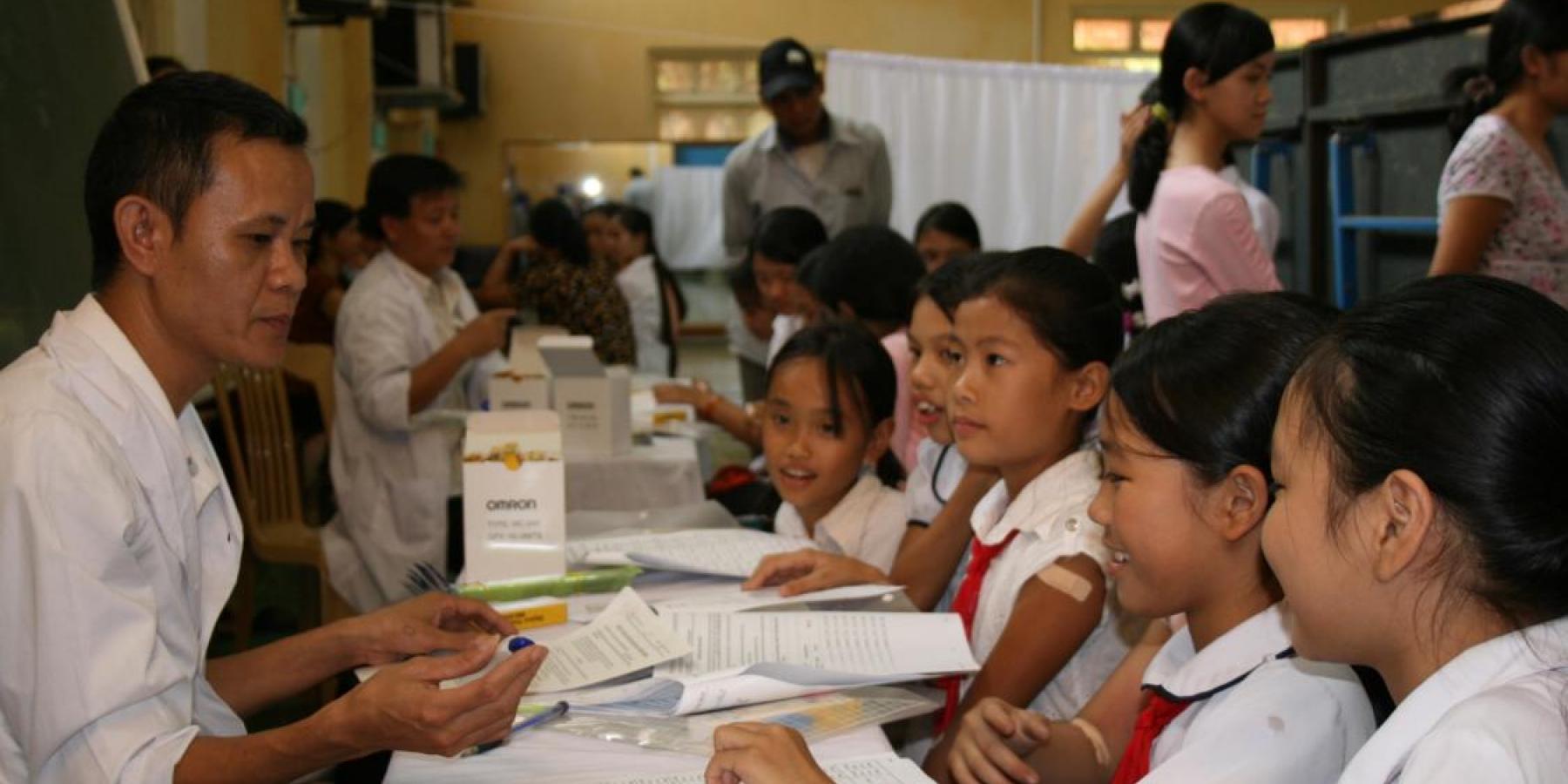COVID-19 and cervical cancer - A pandemic’s impact and a global response
12th January 2021

12th January 2021
Health programs have struggled to sustain essential health services while implementing social distancing policies to reduce COVID-19’s spread, and simultaneously re-direct resources and staff to manage COVID-19 itself. As of August 2020, the WHO reported a 20% reduction in global immunization rates. HPV vaccines, which protect against the virus that causes cervical cancer, are routinely delivered through a mix of health facilities, school-based programs and community outreach. However, UNICEF estimates that as many as 1.6 billion students across 192 countries were sent home in 2020 due to COVID-19 containment strategies, school closures and lockdowns. This has resulted in significant delays in vaccinations, with the potential of many girls in low-income settings never returning and thus foregoing protection against HPV infection.
National data from across Africa bears out these global statistics: In Tanzania, only around 20% of the country’s HPV vaccination goals were met in the initial months of the pandemic. In Senegal, HPV vaccination programs were far more disrupted than the country’s programs for pentavalent, hepatitis B, or rotavirus vaccines. Further research should explore the reasons for this drop in more detail, but we do know that the HPV vaccine is a relatively new introduction and is not well-established in routine immunization schedules in most high-burden countries. The relatively ‘older’ target population of girls aged 9-15 years implies a disproportionate impact on school-based delivery and a subsequent need to now review delivery strategies.
Cervical cancer screening in most parts of the world requires women to visit a health clinic. Zambian cervical cancer prevention providers saw a 40% decrease in the number of women seeking services during the peak of the pandemic. Equally, women who are experiencing symptoms consistent with cervical disease may choose to not attend clinics for fear of being burdensome to health workers under stretched capacity or fear of increased likelihood of contracting COVID-19. Each delay or lost screening opportunity adds to cumulative future lives lost, as delayed diagnoses also mean the potential for missing the window for curative treatment.
New modeling predicts that for each year of delay in scaling up the three elimination intervention targets, up to 326,000 additional women in low- and middle-income countries will die. Catch-up vaccination and screening programs with associated public outreach to rebuild confidence in prevention and early detection services are crucial to keep the world on track towards the 2030 targets for cervical cancer elimination.
Despite these challenges, the commitment and innovative spirit of health practitioners remains steadfast. Conversations with leaders in global cervical cancer prevention reflect their optimism that new approaches can not only circumvent limitations due to COVID-19, but actually inform improvements in cervical cancer prevention as the pandemic’s trajectory is reversed. Equally, cervical cancer advocates are engaging their governments to call for rapid action to develop national scale-up plans and associated financing to implement WHO’s Global Strategy to accelerate the elimination of cervical cancer. A key tactic here will be building elimination capacities into COVID-19 recovery plans, thus working towards more resilient health systems in future.
The fight against COVID-19 has increased capacity for molecular testing to detect the SARS-CoV-2 virus. Viral testing for COVID-19 also provides an opportunity to expand HPV DNA testing capacity. In addition, we know that HPV self-sampling is an innovation which counters much of the fear and stigma discussed, avoids a speculum pelvic exam and empowers women.
Responses to COVID-19 have built confidence in remote consultation and self-car, speeding their adoption and hopefully aiding self-sampling to become a widespread reality. Many programs have transitioned to virtual platforms for training of community health providers and increased the use of mobile technology for outreach to women, a real step-change in our effort to reach women in rural areas.
The most critical sign of optimism in the battle against cervical cancer took place on November 17, when WHO formally launched its Global Strategy, bringing together the voices of champions from across the world. For the first time, the world has united to permanently eliminate cancer as a threat to lives in all countries.
As governments take steps to build back better, we urge fresh thinking to harness synergies between COVID-19 and cervical cancer elimination plans. Alignment of national strategies with the 90:70:90 global targets and elimination ambition is an opportunity to:
Utilize COVID-19 vaccination and testing infrastructure and services for greater efficiency;
Build in HPV vaccination and screening catch-up measures to mitigate service disruptions;
Routinely adopt women-friendly services with self-sampling, HPV testing and navigation tools as featured innovations;
Undertake a review of service planning to optimize integration of elimination services at all healthcare levels as a foundation for stepwise scale-up to achieve the 2030 coverage targets.
January is Cervical Cancer Awareness Month. We enter the new year celebrating the practitioners, policymakers, advocates, and women themselves who have sustained their commitment to ending this preventable disease. The challenge of COVID-19 has shown us all the importance of good health and only redoubled our resolve to work towards a world free of cervical cancer.
Heather White is the Executive Director of TogetHER for Health, a partnership of implementers and advocates working to end cervical cancer deaths in low-resource settings.
Julie Torode is Director of Special Projects at UICC and co-chair of Cervical Cancer Action for Elimination (CCAE), a global network of organizations accelerating progress towards a world free from #cervicalcancer. CCAE is currently co-chaired by the American Cancer Society, Cancer Research UK and the Union for International Cancer Control (UICC).
Both networks work together towards the global ambition to eliminate cervical cancer.
The views expressed in this blog are solely the authors' own and do not necessarily represent the views of the NCD Alliance.